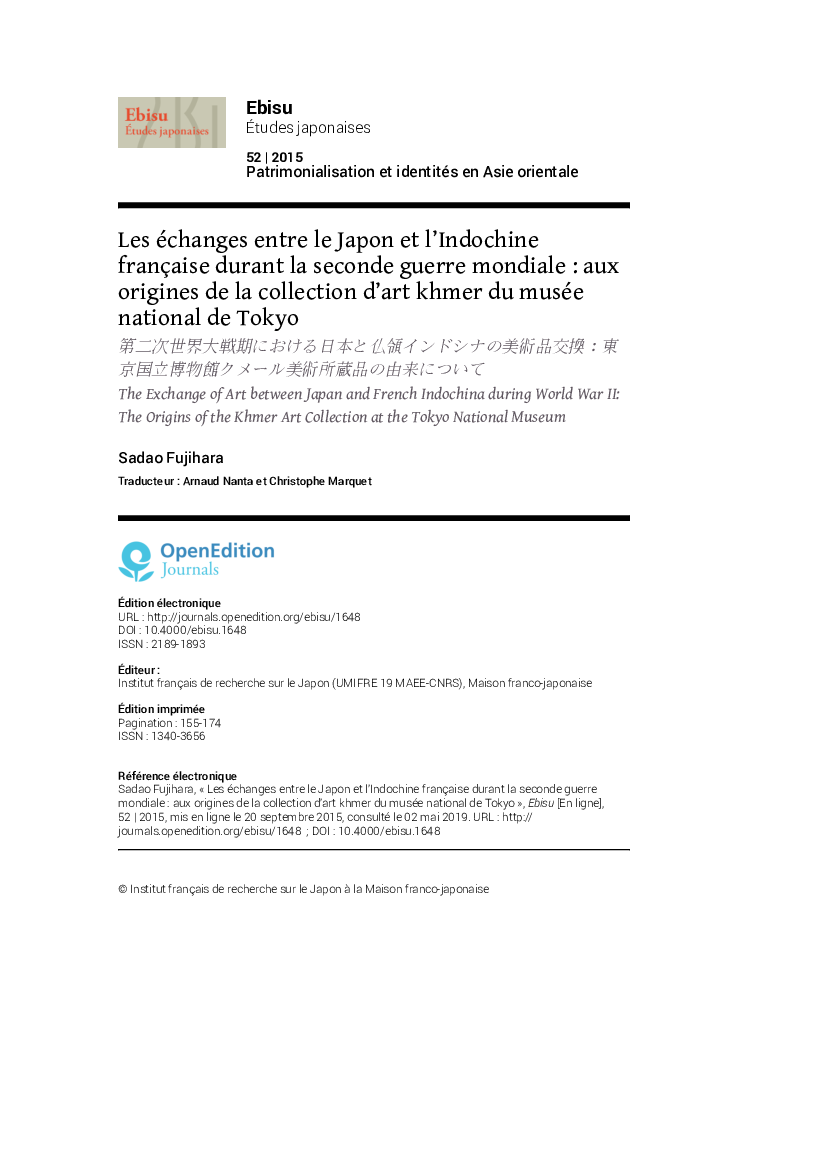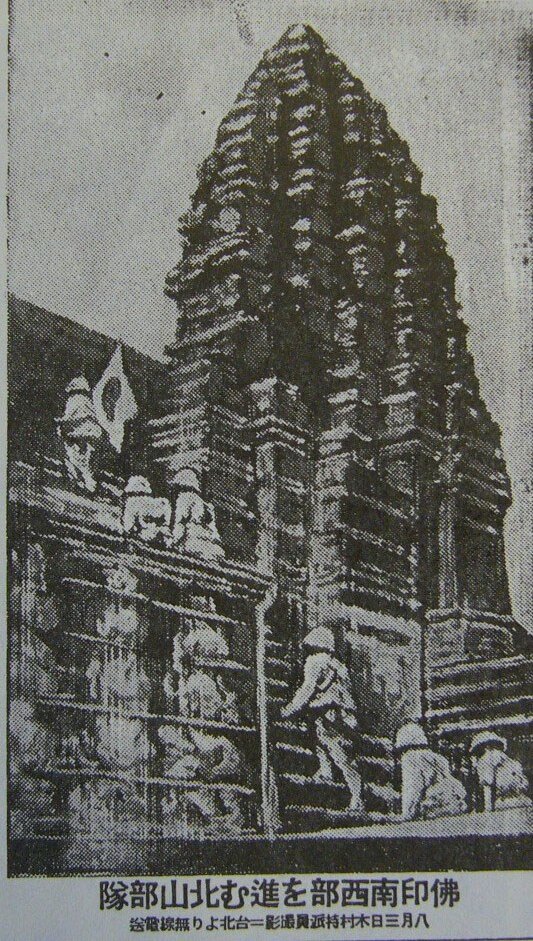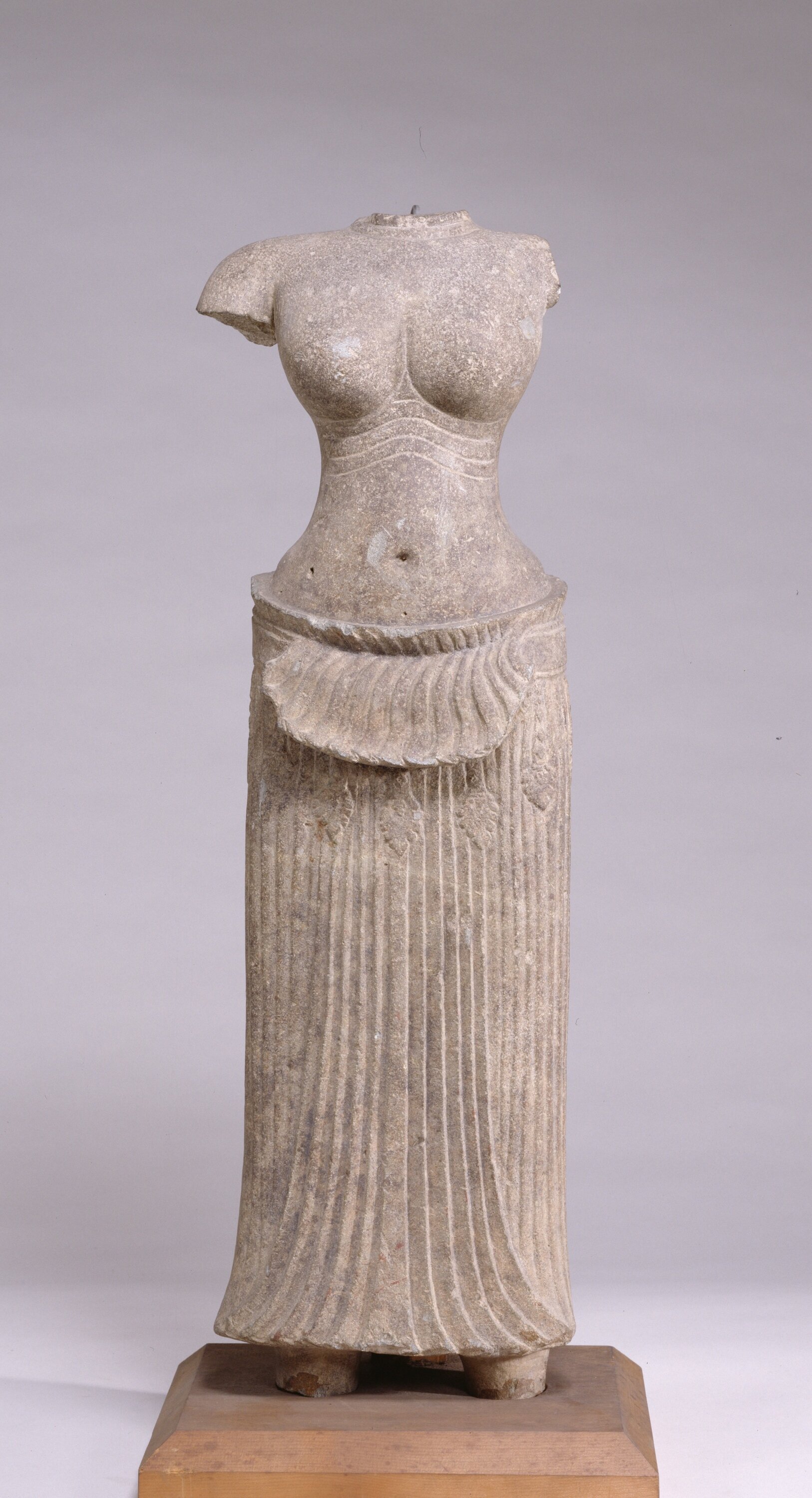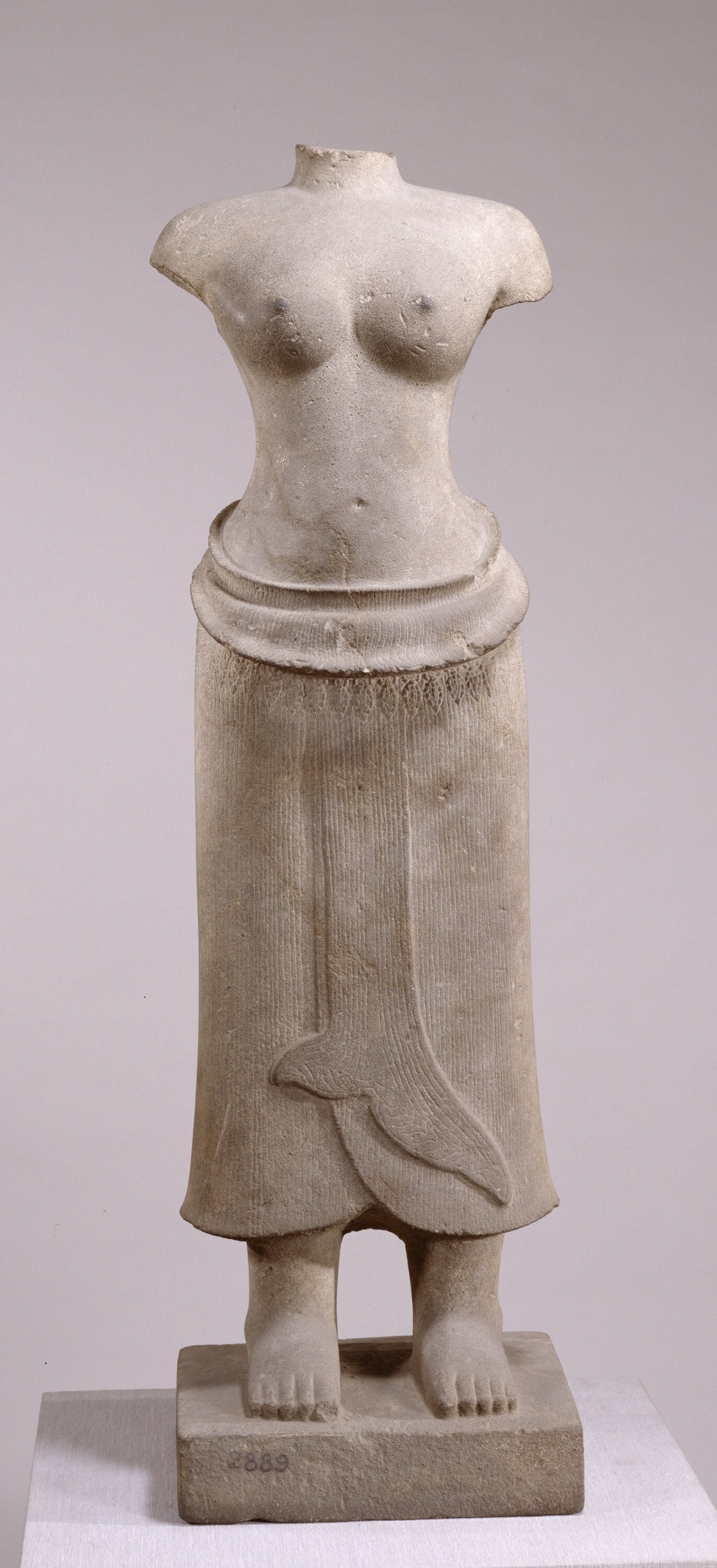The (Murky) Origin of the Tokyo National Museum Collection of Khmer Art
by Sadao Fujihara
Ancient Khmer sculptures as "political gifting": the controversial case of cultural exchanges between Colonial France and Imperial Japan during World War II.

- Publication
- Ebisu, Etudes Japonaises, vol. 52, pp 155-174 | Open Edition ISSN : 2189-1893
- Published
- 2015
- Author
- Sadao Fujihara
- Pages
- 21
- Languages
- French, Japanese
pdf 909.3 KB
The Tokyo National Museum possesses one of the largest collections of Khmer art in the world after French and Cambodian museums. This collection was assembled in 1944, during World War II, through an exchange between Imperial Japan and the École française d’Extrême-Orient.
At EFEO suggestion in 1941 — at a time researchers of Jewish ascent such as Suzanne Karpelès, co-founder of Phnom Penh Buddhist Institute, were expelled from its ranks –, the Imperial Museum of Tokyo received sixty-nine objects from French colonial institutions (including important statues from Angkor Thom) in return of thirty-one ancient Japanese artefacts (swords, lacquerwork, nothing comparable with the large sculptures included in EFEO “donation”), which never reached Cambodia and were kept by EFEO in Vietnam.
According to the author, the collection gifted to Japan was valued then around 50,000 yen, close to 1,5 million USD at nowaday’s currency rate. French colonial officials wanted to showcase the “rebirth of Angkor” thanks to the French efforts, to quote the title of one of the several lectures given in Japan in May-June 1941 by EFEO researcher Victor Goloubew.
As for the Japanese side, it was important to manifest an official interest in Cambodian culture as the Empire was attempting to consolidate its control on parts of Indochina. The author notes that many books about Angkor and the Ancient Khmer civilization were translated into Japanese in the 1940s, including the 1924 essay by George Groslier, translated in 1943 — the author was killed in June 1945 by the Japanese forces of occupation in Phnom Penh.
1) Japanese troops entering Angkor Wat in 1941, as pictured in the Asahi Shimbun daily. 2) The same Asahi Shimbun article reporting the EFEO exchange in 1941 (reproductions from the publication).
A public exhibition was initially scheduled for 1944 in Tokyo, but by then Japan was being defeated on all frontlines, the Vichy government was collapsing in France, and it was only in September 1949 that the Khmer art pieces were shown to the public, “with limited success and no catalog”. A part of the 69 exhibits had to wait until January 2013 to enter the permanent displayed collection of Tokyo National Museum. Earlier, 3 pieces from that collection had been displayed during the Paris-Washington-Tokyo 1997 – 1998 exhibition, Angkor et dix siècles d’art khmer (Angkor and Ten Centuries of Khmer Art, Tōkyō-to bijutsukan 1997 – 1998).
A transaction still shrouded in mystery
For his research, the author has looked up the EFEO archive, the Journal of the Imperial Museum Sculpture Department (Teishitsu haku-butsukan chōkoku-shitsu nisshi 帝室博物館彫刻室日誌), and the Bulletin of Cultural Foreign Relations (Kokusai bunka 国際文化) published by the Kokusai bunka shinkōkai Society (国際文化振興会). However, the corresponding documents have disappeared from the EFEO archive, remarks the author: “In the Box 9 (regarding exchange and sales of Cambodian Ancient Art pieces), section R10‑3, “Exchange”, there is a folder titled “Échange d’objets archéologiques entre l’École et le musée du Japon, 1941” [Exchange of archaeological objects between EFEO and the Japan Museum, 1941] but said folder is empty. A handwritten annotation “→J4 Musée du Japon” means these documents have been transferred to another folder, yet this folder doesn’t appear in the register. Thus, we can only suppose that someone removed these documents from the archive between 1941 and 1944”.
[ADB Input] In his study on the history of EFEO (1994), researcher Pierre Singaravélou noted that a Letter from the Angkor Conservator to the Director of EFEO [George Coedès at that time] dated 4 Jan. 1943 (box P 8) mentioned
Vente ou don de 23 caisses pesant 8 tonnes d’objets et de sculptures cambodgiennes, au musée de Tokyo, en janvier 1943. [Sale or donation of 23 crates weighing 8 tons of Cambodian objects and sculpures, to the Museum of Tokyo in January 1943. [p 254]

1) Buddha sitting on the Naga, Angkor Thom sculpture (12th century) part of the EFEO-Tokyo Museum exchange (photo from the publication). 2) This statue is displayed in the TNM online permanent collection as ‘TC378, acquired through exchange with l’Ecole francaise d’Extreme-Orient’ [ADB screenshot].
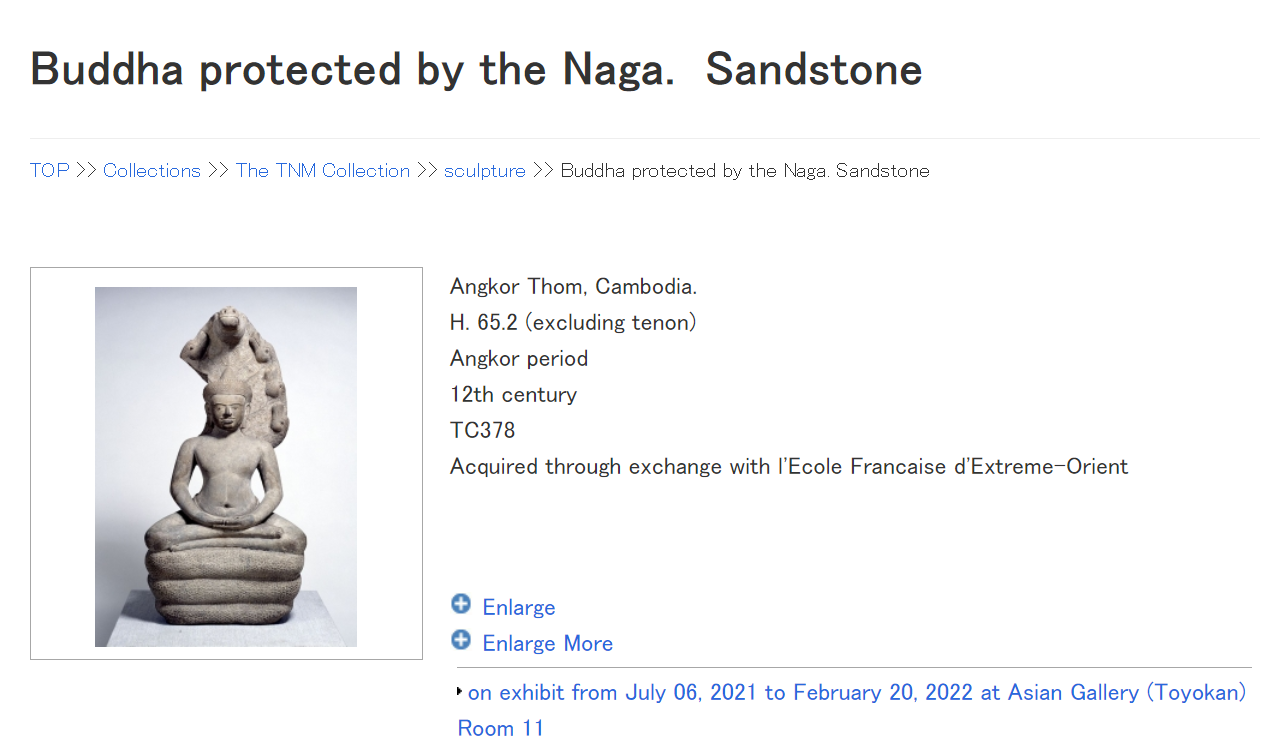
1) Buddha sitting on the Naga, Angkor Thom sculpture (12th century) part of the EFEO-Tokyo Museum exchange (photo from the publication). 2) This statue is displayed in the TNM online permanent collection as ‘TC378, acquired through exchange with l’Ecole francaise d’Extreme-Orient’ [ADB screenshot].
1) Buddha sitting on the Naga, Angkor Thom sculpture (12th century) part of the EFEO-Tokyo Museum exchange (photo from the publication). 2) This statue is displayed in the TNM online permanent collection as ‘TC378, acquired through exchange with l’Ecole francaise d’Extreme-Orient’ [ADB screenshot].
Among the pieces referred to in that “exchange”, two female deities, (1) TC384 (origin Damdek) and (2) TC390 (fragment of sculpture from Phnom Bakheng).
TC400 is just presented as a Standing Female Divinity from Cambodia, with no mention of origin.
- Title in Japanese: 第二次世界大戦期における日本と仏領インドシナの美術品交換:東京国立博物館クメール美術所蔵品の由来について (French translation by Arnaud Nanta and Christophe Marquet)
- These pieces can be located in the Tokyo National Museum Online Repertory (in Japanese only) or at the Colbase database (search in English available).
Tags: Khmer art, EFEO, French Collaboration, archaeology, colonialism, Japan, sculpture
About the Author
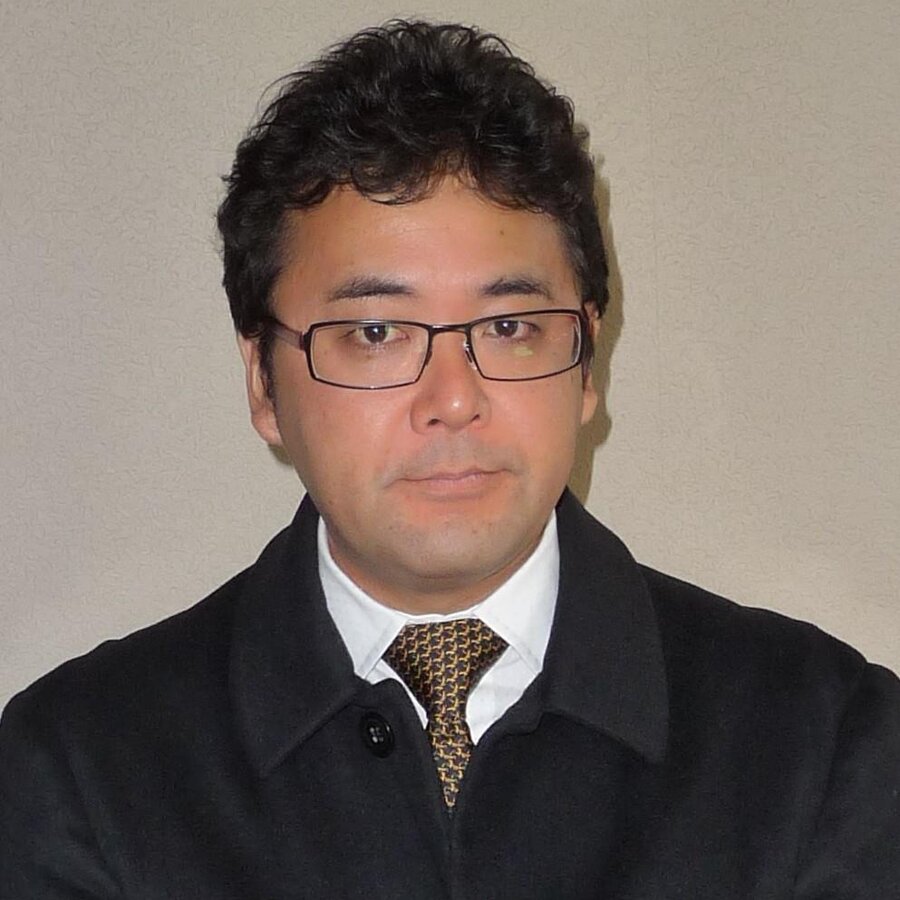
Sadao Fujihara
Fujihara Sadao 藤原貞朗 is a Japanese historian specialized in the history of colonial Indochina.
A professor at the Faculty of Social Sciences, Ibaraki University (茨城大学人文学部), he is the author of Orientalisuto no yūutsu. Shokuminchi shugi jidai no Furansu tōyō gakusha to Ankōru iseki no kōkogaku オリエンタリストの憂鬱―植民地主義時代のフランス東洋学者とアンコール遺跡の考古学 [Orientalist Melancholy: The French Orientalists and the Archaelogical Reseach in colonized Angkor] (2008: Tōkyō, Mekon めこん, 582 p.).

